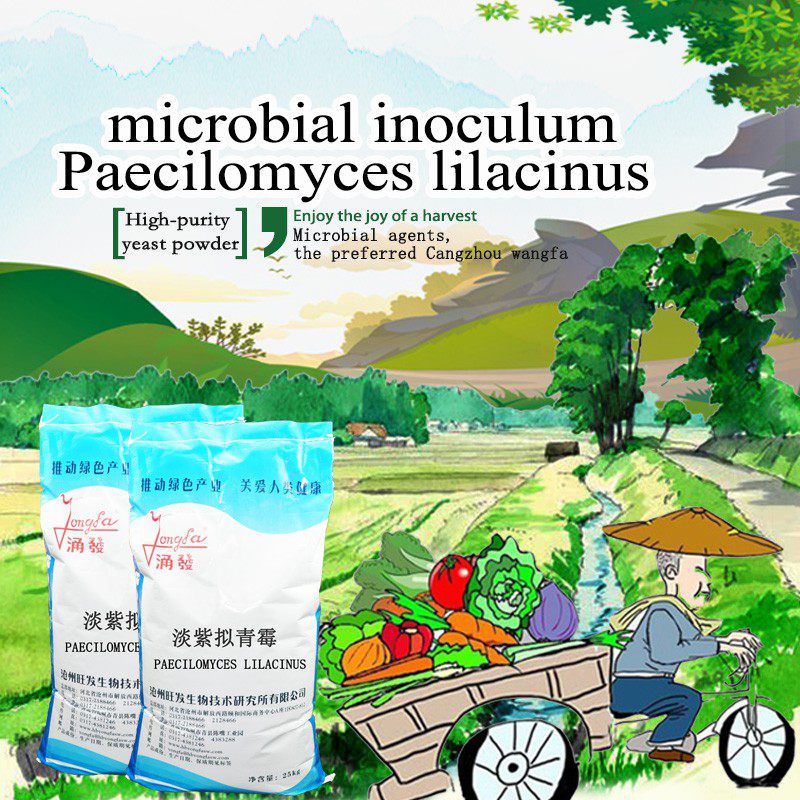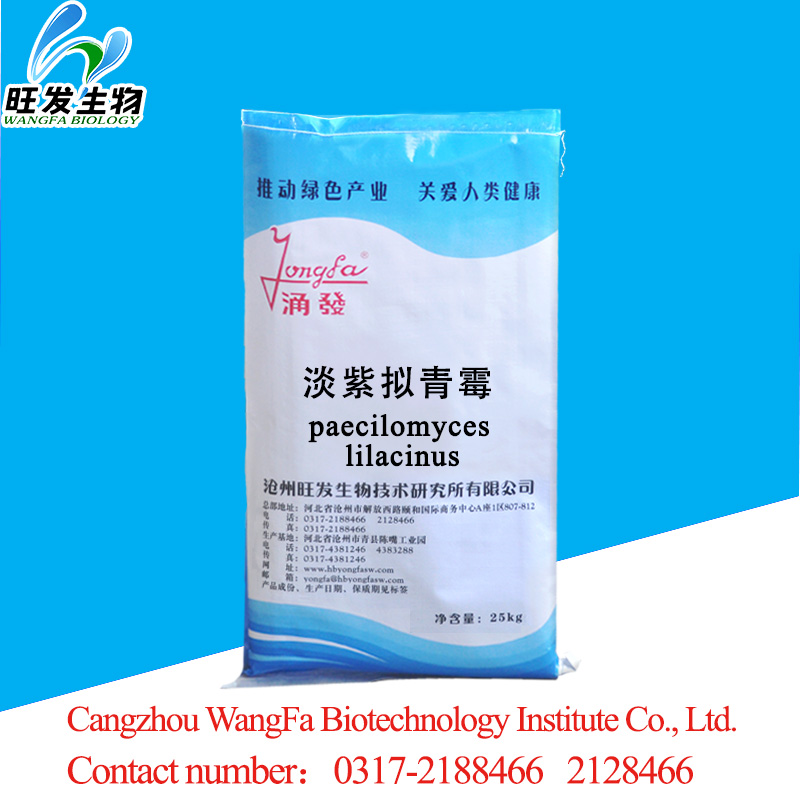

[Main elements] Paecilomyces lilacinus living spores.
[Character] Light brown powder.
[Biological feature] Paecilomyces lilacinus belongs to deuteromycetes, hyphomycetales, paecilomyces.This fungus are distributed around the world widely. P.lilacinus
has the good efficiency,wide distribution of host, easy cultivation, and especial effect on controlling plant pathogen nematodes.
[Characteristics] Paecilomyces lilacinus is a kind of endogenous parasitic fungi, which is the parasitical natural enemy of plant parasites nametodes, it can parasitic on eggs of root-knot nematodes, also infects and assimilates larva and female,obviously decrease the harm of root-knot meloidogyme,cyst and ditylenchus nematodes.
Paecilomyces lilacinus is a new type pure microecologics with living spores. It has the characteristics of high and long efficiency, safe, no pollution, no residues, and promote growth of plants. Experiments show that to use the paecilomyce lilacinus around the plants roots can not only control the infection of root-knot nematodes, but also improve the growth of plant roots and vegetative organs. To use the paecilomyce lilacinus for seed dressing before sowing or planting, it will accelerate the germination of seeds and growth of seedling; and the yield will increase about 15%.
[Functional mechanism] The spore of paecilomyce lilacinus producing vegetative hyphae, which can enter the egg shell, larva or body wall of female adult, then the vegetative hyphae absorb the nutrition from the nematodes body, and produce condidiophores and conidia, the physiological metabolism of the nematodes are damaged, result in the death of the root-knot nematodes.
[Main functions] 1.Paecilomyce lilacinus can control many kinds of nematodes, it has the greatest potential for application as a biological agent for controlling root-knot nematodes.
2.Paecilomyce lilacinus can produce many kinds of enzymes, for example the rich chitinase, which can degrade the chitin, improve the parasitism rate on nematodes, also produce the cell lyase, dextransae, fibroinase.
3.Degradation effect: paecilomyce lilacinus can promote the degradation of indissolvable phosphate, many research showed that paecilomyce lilacinus can promote the solubilization effect by 30%, and can also promote the degradation of some chemical polymers such as pesticide, tannery wastewater, all that improves paecilomyce lilacinus have environmental protection effect.
4. Promote the plant growth, during the fermentation period, paecilomyce lilacinus will produce rich ramification, one of the ramification is similar to the heteroauxin product, which can promote the root and pants growth, hereby, to use the paecilomyce lilacinus around the plants roots can not only control the infection of root-knot nematodes, but also improve the growth of plant roots and vegetative organs.
[Usage and dosage]
1. For seed dressing, the dosage should be 1% of the seed, after seed dressing, should pile and cover the seeds for 2 or 3 hours, sow after dry them in shade.
2. For seedbed, mix paecilomyce lilacinus powder with appropriate media, and then spread the mixture on the seedbed, then sow and earth up. 1kg paecilomyce lilacninus powder can be used for 30 to 40 square meters seedbed.
3. For the media of seedling, 1kg paecilomyce lilacninus powder for media of 2 to 3 square meters, mix them, and then put into the seedling container.
4. For applying it in hole near the plant or seed, 7.5kg to 45 kg per hectare.
5. For adding in organic fertilizer, mix 2 to 3kg with 1 tonne organic fertilizer, then take second fermentation 3 to 5 days.
[Notice] Do not mix the product with chemical bactericide.
[Using scope] For making microorganism fertilizer or used as microbial inoculants.
[Storage] Keep it at a shady cool and dry place.
[Quality guarantee period] Eighteen months.
[Specification] 25kg per bag.

